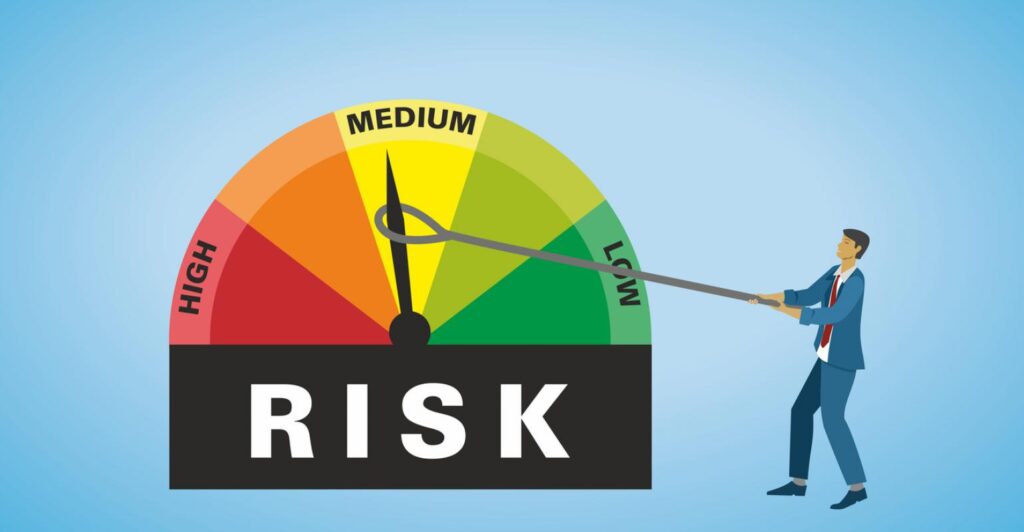In the world of cryptocurrency trading, you have the option to engage in either spot trading or futures trading.
Spot trading is the more traditional method of purchasing or selling cryptocurrencies immediately at their current market price. This type of trade is straightforward: you pay the total cost of the asset and gain possession of it immediately.
It’s akin to buying groceries at the store; you pay the price and take them home.
On the other hand, futures trading allows you to speculate on the future price of cryptocurrencies without the need to hold the actual digital currency.
When you trade futures, you enter into a contract to buy or sell the crypto asset at a predetermined price on a specified future date.
This approach can enable higher capital efficiency due to leverage, which means you only need to put down a fraction of the asset’s price, acting as a margin, to enter the trade.
Understanding Crypto Futures

Definition of Crypto Futures
Crypto futures are a financial contract in which you agree to buy or sell a specified cryptocurrency at a predetermined price on a specific date.
Unlike spot trading, which involves the immediate purchase or settlement of cryptocurrency, futures contracts are not about owning the asset immediately but rather a later commitment to a transaction.
Mechanics of Future Contracts
When you enter a futures contract, you must understand its two primary components:
- Expiration Date: This is the date on which the contract must be settled.
- Futures Price: The price at which the crypto asset will be bought or sold.
Every futures contract involves a buyer and seller, where the buyer agrees to purchase, and the seller agrees to deliver the underlying asset at the agreed-upon price, regardless of the current market price at the expiration time.
Benefits of Trading Futures
There are several benefits to trading futures:
- Leverage: You can control a large amount of cryptocurrency with a relatively small capital.
- Hedging: Futures can be used to hedge against price volatility in your cryptocurrency portfolio.
- Speculation: If you predict the market movement correctly, trading futures can lead to significant profits.
Always remember that while the benefits can help you achieve your investment goals, they come with risks due to leverage, which can amplify gains and losses.
Exploring Spot Trading

In spot trading, you engage directly with the current market price of a cryptocurrency and settle transactions instantly. Let’s break down what spot trading entails, how it’s structured, and the benefits it holds for you as a trader.
Definition of Spot Trading
Spot trading is the process where you buy or sell a commodity, financial instrument, or cryptocurrency for immediate settlement on the spot date, which is typically two business days after the trade date.
The price you pay or receive is the spot price, which reflects the current market value of an asset.
Spot Market Structure
The spot market structure is straightforward: transactions are conducted directly between buyers and sellers, over-the-counter (OTC), or via centralized exchanges. In cryptocurrencies, trading pairs indicate the two currencies exchanged, such as BTC/USD, where you buy or sell Bitcoin in exchange for US dollars at the current market price set by supply and demand dynamics.
Advantages of Spot Trading
Spot trading offers several benefits for you:
- Transparency: The spot price is easily verifiable, providing clear visibility of the current value of assets.
- Simplicity: Unlike other trading methods, spot trading is more straightforward and intuitive, especially if you are new to cryptocurrency trading.
- Immediate Ownership: When you purchase an asset in the spot market, it becomes yours immediately, which can be advantageous for holding or using it without delay.
- No Leverage: This limits your exposure to debt as you are not borrowing funds to trade; therefore, it generally involves lower risk than leveraged products.
Critical Differences Between Futures and Spot Trading
Trading in the cryptocurrency market can be executed through different methods, each with distinct characteristics regarding market liquidity, trading volume, and price determination. Understand these differences to make informed decisions that suit your trading strategy.
Market Liquidity
Futures Trading:
- Liquidity: High liquidity due to many market participants and standardized contracts.
- Market Depth: The availability of buyers and sellers often results in tighter bid-ask spreads.
Spot Trading:
- Liquidity: This can vary significantly depending on the asset and exchange.
- Market Depth: Lower liquidity might lead to higher bid-ask spreads, affecting execution prices.
Trading Volume
Futures Trading:
- Volume: Generally, futures markets have higher trading volumes because of the leverage they offer.
- Impact: This higher volume contributes to the deep liquidity and increased efficiency in price discovery.
Spot Trading:
- Volume: Spot markets may have lower volumes relative to futures, particularly for less popular assets.
- Impact: Lower volumes can sometimes make spot markets susceptible to higher price volatility.
Price Determination
Futures Trading:
- Price: Futures prices are based on the expected future price of the asset, including interest rates and time to maturity.
- Influence: Prices are influenced by market perceptions of future demand and supply.
, Spot Trading:
- Price: Spot prices reflect the current market value of a cryptocurrency, with immediate transaction settlement.
- Influence: Prices are more influenced by current supply and demand dynamics within the spot market.
Risk Management in Futures vs Spot Trading

In managing risks, understanding how leverage and price volatility impact your futures and spot trading trades is essential.
Leverage and Margin Requirements
In futures trading, you deal with leverage—the ability to control prominent positions with relatively little capital.
This amplifies both potential gains and losses. Margin requirements are the funds you must maintain in your account to hold positions open.
In spot trading, leverage is typically absent or minimal, meaning you pay the total price of the asset upfront, resulting in a lower risk profile as you’re not exposed to margin calls.
Price Volatility and Slippage
Price volatility refers to the frequency and magnitude of asset price changes. In crypto markets, both spot and futures trading can experience significant volatility, but with futures, the amplified effects of leverage can lead to more substantial gains or losses quickly.
Slippage occurs when there is a difference between the expected price of a trade and the executed price.
Spot trades generally execute at or near the current market price, while futures trades might experience more slippage due to the time lapse between trade initiation and execution.
Legal and Regulatory Considerations
In crypto trading, you must navigate a complex web of legal and regulatory frameworks that vary significantly across jurisdictions. Understanding these can be critical for compliance and avoiding enforcement actions.
Jurisdictions and Regulations
Different countries and regions have distinct regulatory approaches to crypto spot and futures trading.
For instance, in the United States, the Commodity Futures Trading Commission (CFTC) has jurisdiction over crypto futures as it classifies cryptocurrencies like Bitcoin as commodities. By contrast, spot trading may come under the oversight of the Securities and Exchange Commission (SEC) if it involves securities.
- United States
- Futures: CFTC regulates commodities
- Spot: SEC oversees if involving securities
- European Union
- Comprehensive Markets in Crypto-Assets regulation proposed
- Asia
- Each country varies; some, like Japan, are more progressive, while others have stricter controls.
Compliance and Enforcement
To operate legally, your compliance with these regulatory bodies and their requirements is essential.
The SEC, for example, has pursued legal actions against various crypto companies, especially since its crackdown on Initial Coin Offerings (ICOs) in 2017. Adhering to know-your-customer (KYC) and anti-money laundering (AML) laws is also crucial.
- Enforcement Actions: The SEC has been active against non-compliant entities.
- KYC/AML: Mandatory for operations to prevent illegal activities.
- Insurance Funds: Some derivative exchanges like Bybit or BingX offer them as risk management.
Remember, regulatory landscapes are dynamic, and staying informed about current and proposed regulations is crucial for your trading activities.
Market Participants and Their Roles
In the landscape of crypto futures and spot trading, understanding the roles of market participants is crucial as they directly influence liquidity, price discovery, and the overall functioning of the market.
Retail Traders
As a Retail Trader, you represent an individual investor who participates in the market for personal gain. In spot trading, you typically buy and sell cryptocurrencies at current market prices, fully paying for assets upfront, which minimizes your risk. In futures trading, you might trade contracts for profits based on predictions, often with the option to use leverage, which can amplify both gains and potential losses.
Institutional Players
Institutional Players encompass larger entities such as investment banks, hedge funds, and mutual funds.
Their involvement usually introduces significant volume to the markets due to their substantial capital bases. These players often engage in both spot and futures trading for a mix of speculative purposes, hedging, and investment.
Given their sizeable transactions, they contribute to deepening market liquidity and might influence market trends significantly.
Market Makers
As Market Makers, you provide liquidity by being ready to buy and sell at publicly quoted prices.
You profit from the spread between the buy and sell prices and help ensure that there’s always a counterparty for trades, which is vital for both spot and futures markets.
Your continuous presence helps to stabilize prices and enables smoother transactions for other participants.
Trading Strategies for Futures and Spot Markets
In the crypto markets, your approach to trading in futures and spot markets will often revolve around hedging and speculation, each with distinct strategies to manage risk and capitalize on price movements.
Hedging Strategies
Hedging strategies in the futures and spot markets help you mitigate risk by offsetting potential losses. Here are two common hedging approaches:
- Long Hedging: If you anticipate the need to purchase cryptocurrencies in the future but are concerned about price increases, you can enter a long position in futures contracts to lock in a price today, potentially protecting yourself against future price spikes.
- Short Hedging: Conversely, if you hold cryptocurrencies and worry about falling prices, taking a short position in the futures market could help preserve the value of your holdings despite any adverse price movements.
Speculative Strategies
Speculative strategies involve taking on market risk in hopes of making a profit. Here are two methods that might be used in both futures and spot trading:
- Trend Following: This involves analyzing market trends and making trades based on the direction you believe the market will go. Spot trading might mean buying a cryptocurrency if an upward trend is anticipated. Futures trading could involve taking long or short positions depending on whether you predict an upward or downward trend.
- Swing Trading: This strategy is used to capitalize on market “swings” or price volatility. The spot market involves buying low and selling high within shorter timeframes. In the future, you might enter a contract when a swing is predicted to start and exit before it reverses, attempting to gain from the price changes within that swing.
Economic Impact of Crypto Futures and Spot Trading
Your engagement with crypto futures and spot trading significantly impacts your investments and the broader economic landscape.
Influence on Cryptocurrency Valuation
- Spot Trading: You trade cryptocurrencies at their current market prices in spot markets. This direct exchange affects the supply and demand dynamics for the underlying asset, influencing its immediate valuation.
- Futures Trading: Conversely, futures agreements impact the expected future value of cryptocurrencies. Your trading activities in futures can lead to price discovery, which can help to stabilize or anticipate cryptocurrency prices.
Effects on Traditional Financial Markets
- Market Integration: When you participate in cryptocurrency trading, you contribute to integrating traditional financial markets and the digital asset space. This can lead to a redistribution of capital and liquidity, affecting both ecosystems.
- Investor Behavior: Your involvement in crypto trading, primarily through futures, influences investor behavior by introducing elements of speculation and hedging not previously available in traditional markets. This can modify investment strategies across the board.
Frequently Asked Questions
As you navigate the intricacies of crypto trading, understanding the nuances between futures and spot markets is critical to making informed decisions. Here are some direct answers to common questions on this topic.
How do trading fees compare between crypto futures and spot markets?
Trading fees in crypto futures markets can sometimes be lower than those in spot markets due to the involvement of leverage and the exchange’s fee structure. However, considering other costs, like funding fees for holding future positions open over time, would be best.
What is the difference between perpetual futures contracts and spot market transactions in cryptocurrency?
Perpetual futures contracts do not have an expiration date, allowing you to hold a position for as long as margin requirements are met. In contrast, spot market transactions involve the immediate exchange of cryptocurrencies at current market prices.
What factors should beginners consider when choosing between spot and futures trading for crypto investments?
Beginners should evaluate their risk tolerance and trading knowledge. Spot trading is often seen as more straightforward and less risky than futures as it doesn’t involve leverage. Futures trading, however, can offer higher potential returns but with increased risk.
How does the traded volume differ when looking at Bitcoin’s spot versus futures markets?
Generally, Bitcoin’s futures markets exhibit higher traded volumes due to the leverage effect, which means that a smaller amount of capital is required to open a more prominent position, attracting more traders seeking greater exposure with less upfront capital.
What are the potential drawbacks of futures trading compared to spot trading in the digital currency?
Futures trading can lead to significant losses due to the leverage involved, especially for inexperienced traders. Additionally, the complexity of understanding futures contracts and the necessity for careful risk management can be challenging for some traders compared to the more straightforward process of spot trading.
Conclusion
In navigating the cryptocurrency market, you have two primary trading approaches: spot trading and futures trading. Spot trading involves buying or selling a digital asset at its current market price, implying immediate ownership transfer.
On the other hand, futures trading allows you to agree on a price now for a transaction that will occur in the future, potentially enabling leverage and hedging strategies. It’s crucial to consider the following points to ensure you make informed decisions:
- Risk Profile: Spot trading generally involves less risk than futures trading due to the absence of leverage.
- Capital Requirements: Spot markets might require more capital upfront as you pay the total price of the asset. Futures can be entered with a smaller capital outlay.
- Profit Potential: With futures, you can have higher profits through leverage; however, remember that this also comes with greater risk.
Your choice between spot and futures trading should align with your investment goals, risk tolerance, and trading expertise.
With diligent research and prudent risk management, both markets offer avenues for participation in the burgeoning field of cryptocurrency.
